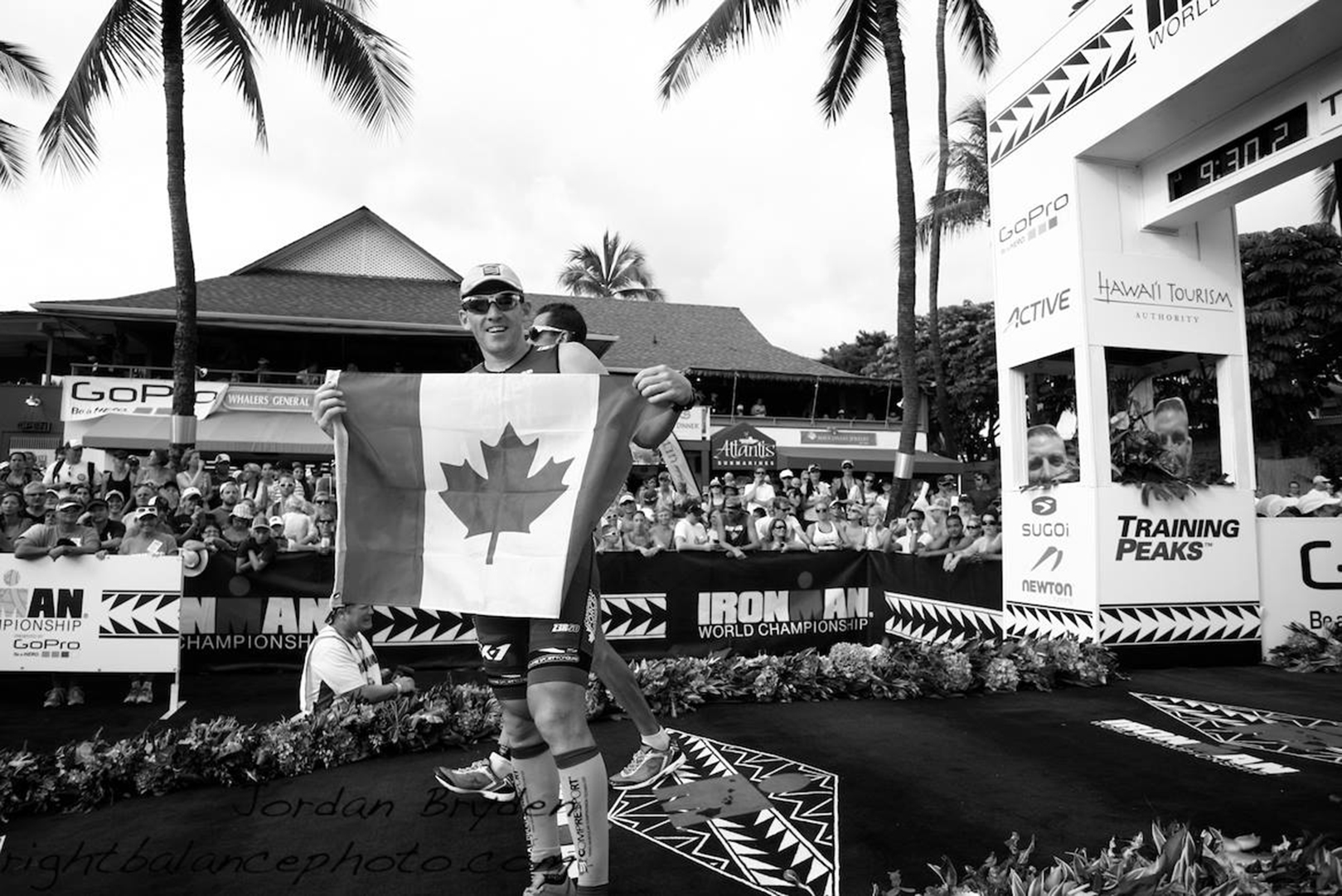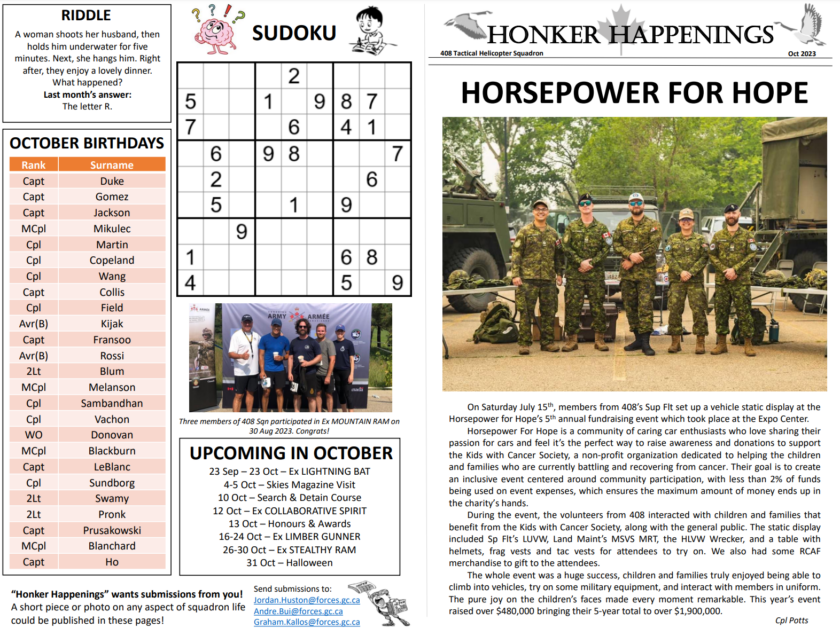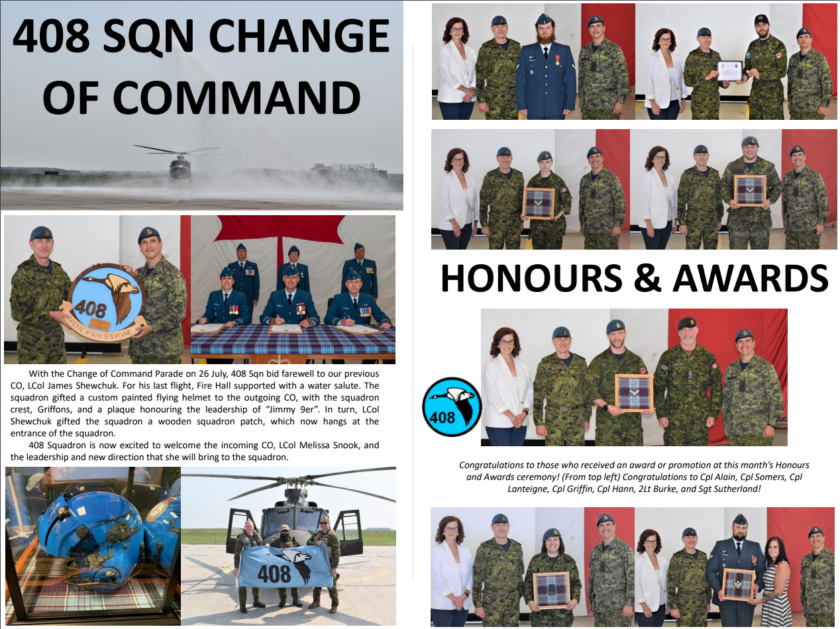408 Squadron officer wins Ironman World Championship military division
Major Joel Maley is the squadron aircraft maintenance and engineering officer at 408 Tactical Helicopter Squadron (THS) at Canadian Forces Base (CFB) Edmonton, Alberta.
He has competed at the Ironman World Championship in Kailua-Kona, Hawaii, USA, for three consecutive years. 2014, however, will go down as the most memorable because he won the military division in the first year that the Championship opened the military division to countries other than the United States.
“This is the icing on the cake for me,” Major Maley said during an interview with Global News. “Physical fitness is very important in the military, and leading by example is important for an officer.
“I’ve been very fortunate to have a supportive wife,” he added. “If you don’t have a supportive wife then there’s no point in going.” He thinks, however, that it is time to “take a step back from Ironman. We’re expecting our fourth child in April.”
By Major Joel Maley
The Ironman World Championship in Hawaii has long been considered the most prestigious long-course triathlon in the world – it was the birthplace of the Ironman. You can enter this prestigious event in only two ways: by qualifying at another Ironman race or via a lottery. For anyone unfamiliar with an Ironman, it consists of a 3.8-kilometre swim, a 180-kilometre cycle, and a 42.2-kilometre run.
In May 2014, I traveled with my family to The Woodlands, in Texas, to compete at the May 17 Ironman Texas. On that day, I set a new personal best of 1:05 for the swim and a new Ironman personal best of 9:05. My performance was good enough for 24th overall (in a field of 2000+ athletes), fourth amateur, and second in the Male 30–34 age division. Perhaps more importantly, my second-place finish in my age group secured a slot at the Ironman World Championship.
After qualifying to the World Championship, I received sponsorship for the championship through the Personnel Support Programs office at CFB Edmonton and the National Sports Office in Ottawa, Ontario.
My family and I travelled to Hawaii eight days before the race. Doing so provided me an opportunity to get used to the heat and to scout out the course. The week before the race is always packed with various activities, such as the parade of nations, package pick-up, the athlete banquet and a mandatory pre-race meeting. It’s easy to be distracted and not get enough rest.
The day of the event starts early. The professional men and women started at 6:30 and 6:35 a.m. respectively; the male age groupers hit the water at 6:50 a.m. while the female age groupers start at 7:00 a.m. for the infamous mass start that launches almost every Ironman race. I’m normally a middle-of-the-pack swimmer and that’s where I ended up in the 3.8 kilometre swim – I finished it in an hour and 10 minutes.
The 180-kilometre bike ride is the second portion. The World Championship is always a tough Ironman because you are forced to deal with the scorching heat and the brutal and unceasing winds of the Big Island. The ride was particularly difficult this year due to the strong winds, but I completed it in five hours and seven minutes. I felt great coming off the bike and knew I had a shot at a new course personal best.
I settled into an easy pace in the marathon and got through the first half in just over an hour and 30 minutes.
Despite some cloud cover, it was still an inferno. I felt as if I was overheating; the only relief from the heat was the ice and water that waited at each aid station. The Energy Lab [the turnaround point in the run] was a completely different beast. The run in was fine, but I knew I was hitting my limits. Everything was starting to tighten up.
I finally caught up to Brad Williams, a retired United States Air Force non-commissioned member, and was just about to settle in to run with him when he said something along the lines of: “Congrats – the military championship is yours.” We shook hands and then he said, “Go get it.”
So that is precisely what I did. My finish time was nine hours and 30 minutes; I finished 138th overall, in the top 100 amateurs, and 25th in Male 30–34 age division. But perhaps most importantly, I finished first in the military division.
I owe a special word of thanks to 408 Tactical Helicopter Squadron, CFB Edmonton and the National Sports Office for supporting me on this challenging journey.
Story and photos courtesy of The Western Sentinel, the newspaper of 3rd Canadian Division.



